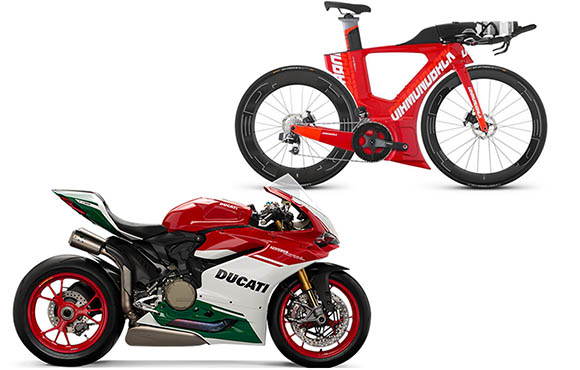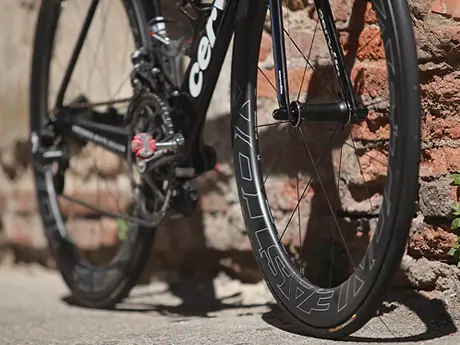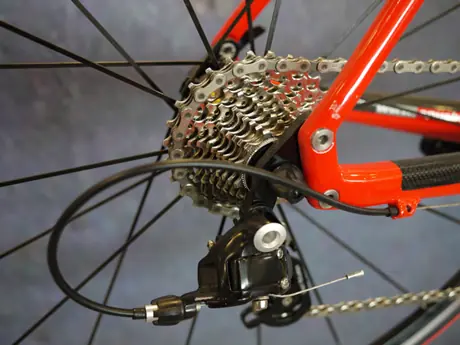Creating Carbon
1 of 7
High-end bikes weigh less than lower-end ones due to the amount of carbon/epoxy/resin used, as well as how the bikes are manufactured. Nearly all the carbon that's sourced for bicycle frame construction comes from one of just five manufacturers. What varies between grades of carbon is the weave density, amount of resin used and assembly process. Carbon fiber that would not pass aerospace industry tolerances can still be used for bicycle manufacturing.
Find:
Your Next TriathlonAerodynamic Design
2 of 7
Photo Courtesy of Ducati, Diamondback
Bicycle manufacturers vary the prince points of respective aero bikesthrough carbon layup schedules, features and component specifications, but the aerodynamics don't change. So less-expensive bikes' shapes resemble more-expensive—and even motorized—bikes.
Find:
Your Next TriathlonComponents
3 of 7
Photo/Greg Kaplan
Shimano shares much of its Dura-Ace level technologies—and aesthetics—with its Ultegra and 105 groups. What you give up for just a few grams of weight is offset by the hundreds of dollars in savings. Trickle-down tech across price tiers means similar durability and nearly identical performance between pro-level bike components, as well as what's available in your local bike shop.
Find:
Your Next TriathlonRound It Down
4 of 7
Photo/Greg Kaplan
The aerodynamics of Zipp's dimpled rim surface and bulging rim shape is shared between all-carbon wheels and its more-affordable aluminum-rim wheels. What you get from trickle-down technology: a less expensive wheel with similar aerodynamic qualities and maybe even better all-weather braking performance.
Find:
Your Next TriathlonWhere the Rubber Meets the Road
5 of 7
Photo Courtesy of Specialized
Pro-level tubular tires constructed with cotton are expensive and can be challenging to maintain. Manufacturers, like Specialized, offer cotton clinchers which you can use with latex tubes. The rubber quality between pro-level tubulars and every-day clinchers is nearly the same, as will the aerodynamic performance. Plus, you'll get nearly the same road feel and enjoy a lower rolling resistance when using clinchers than when using tubulars.
Find:
Your Next TriathlonRider Safety is Not Compromised
6 of 7
Photo Courtesy of Giro
Giro incorporates MIPS technologies in both its pro-level Aether and its enthusiast Foray helmets. Safety is not compromised. Trickle-down tech in helmets means shared aerodynamic design and ventilation implementation.
Find:
Your Next TriathlonAbout the Author








Discuss This Article